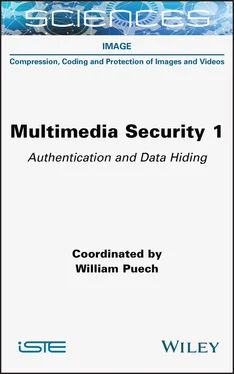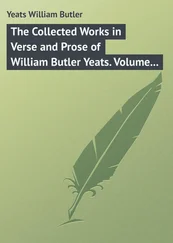We will therefore review the operations undergone by the raw image, and describe the artifacts they leave in the final image. For each of these operations, we will discuss how to model them to detect the significant anomalies caused by a possible manipulation of the image.
1.1. Introduction
1.1.1. General context
The Internet, digital media, new means of communication and social networks have accelerated the emergence of a connected world where perfect mastery over information becomes utopian. Images are ubiquitous and therefore have become an essential part of the news. Unfortunately, they have also become a tool of disinformation aimed at distracting the public from reality.
Manipulation of images happens everywhere. Simply removing red eyes from family photos could already be called an image manipulation, whereas it is simply aimed at making an image taken with the flash on look more natural. Even amateur photographers can easily erase the electric cables from a vacation panorama and correct physical imperfections such as wrinkles on a face, not to mention the touch-ups done on models in magazines.
Beyond these mostly benign examples, image manipulation can lead to falsified results in scientific publications, reports or journalistic articles. Altered images can imply an altered meaning, and can thus be used as fake evidence, for instance to use as defamation against someone or report a paranormal phenomenon. More frequently, falsified images are published and relayed on social media, in order to create and contribute to the spread of fake news.
The proliferation of consumer software tools and their ease of use have made image manipulation extremely easy and accessible. Some software even go as far as to automatically restore a natural look to an image when parts of it have been altered or deleted. Recently, deep neural networks have made it possible to generate manipulated images almost automatically. One example is the site This Person Does Not Exist 1, which randomly generates faces of people who do not exist while being unexpectedly realistic. The most surprising application is undoubtedly the arrival of deepfake methods, which allow, among other things, a face in a video to be replaced with the one of another person (face swapping).
1.1.2. Criminal background
These new possibilities of image manipulation have been exploited for a long time by governments, criminal organizations and offenders. Stalinist propaganda images can come to mind, in which certain characters who had become undesirable were removed from official photographs (Figure 1.1).

Figure 1.1. An example showing how an image has been modified several times in a row, each person who had lost favor seeing their image removed from the photo. Only Joseph Stalin appears in all four photos
Today, image manipulation can serve the interests of criminal or terrorist organizations as part of their propaganda (false claims, false events, masking of identification elements, addition of objects). Face swapping and deepfake techniques are also a simple way to undermine the image and privacy of public figures by placing them in compromising photos. The manipulation of images is also a means of exerting coercion, pressure or blackmail against a third party. These new image manipulation techniques are also used by pedophiles to generate photographs that satisfy their fantasies. Manipulated images can also be used to cause economic harm to companies through disinformation campaigns. Administrative documents can be falsified in order to obtain official papers, a rental document or a loan from specialized organizations. Face morphing, whose objective is to obtain the photo of a visually “compatible” face from two faces, enables two users to share the same ID in order to deceive an identity check.
1.1.3. Issues for law enforcement
In the past, confessions, testimonies or photographs were enough to prove guilt. Technologies were not sufficiently developed to mislead investigators. Today, these methods are no longer sufficient and law enforcement authorities need innovative scientific tools to be able to present reliable evidence in court. As technology evolves rapidly, law enforcement agencies must continuously ensure scientific monitoring in order to keep up with the state-of-the-art technology, to anticipate and to have the most recent tools available to detect manipulation and other forms of cheating for malicious purposes. It is essential to maintain a high level of training for the experts responsible for authenticating the images. In fact, the role of the police, and in particular of the technical and scientific police, is to highlight any falsification in order to allow perpetrators to be sentenced, but also to exonerate the persons under judicial enquiry if they are innocent or if their crime cannot be proven. The role of the expert in image authentication is to detect any form of manipulation, rigging or editing aimed at distorting reality. They must be able to answer the following questions:
– Is the image real?
– Does it represent the real scene?
– What is the history of the image and its possible manipulations?
– What is the manipulated part?
– Has the image come from the device that supposedly took it?
In general, it is easier to conclude that an image is falsified than to say it is authentic. Detecting manipulation traces is getting harder over time, as new forgery methods are being developed. As a result, not finding any forgery traces does not prove the image’s authenticity. The level of expertise of the forger should also be taken into account. In fact, the possible traces of manipulation will not be the same depending on whether the author is a neophyte, a seasoned photographer or a special effects professional. The author can also use so-called anti-forensic techniques aimed at masking traces of manipulation so that they become undetectable by experts; it is up to the expert to know these techniques and their weaknesses.
1.1.4. Current methods and tools of law enforcement
As technologies evolve over time, detection tools must also adapt. Particularly during the transition from film photography to digital images, the authentication methods that were mainly based on semantic analysis of the scene (visual analysis of defects, consistency of shadows and lighting, vanishing points) have been completed through structural and statistical analyses.
To date, available commercial tools are not helpful to the authentication of an image. Most of the time, experts need to design their own tools. This raises the concern of deciding on what ground results from such tools should be accepted as evidence in court. In order to compensate for this lack of objective and precise tools, the police recruits trainees, who participate in national projects (DEFALS challenge funded by the DGA and the French National Research Agency) or international projects (H2020 projects of the European Commission). The objective is to involve university researchers as well as industrialists and practitioners (forensic experts). In addition, experts develop good practice guides such as the “Best Image Authentication Practice Manual” within the framework of the ENFSI 2to standardize and formalize analysis methodologies.
Digital images are an essential medium of communication in today’s world. People need to be able to trust this method of communication. Therefore, it is essential that news agencies, governments and law enforcement maintain and preserve trust in this essential technology.
Читать дальше













